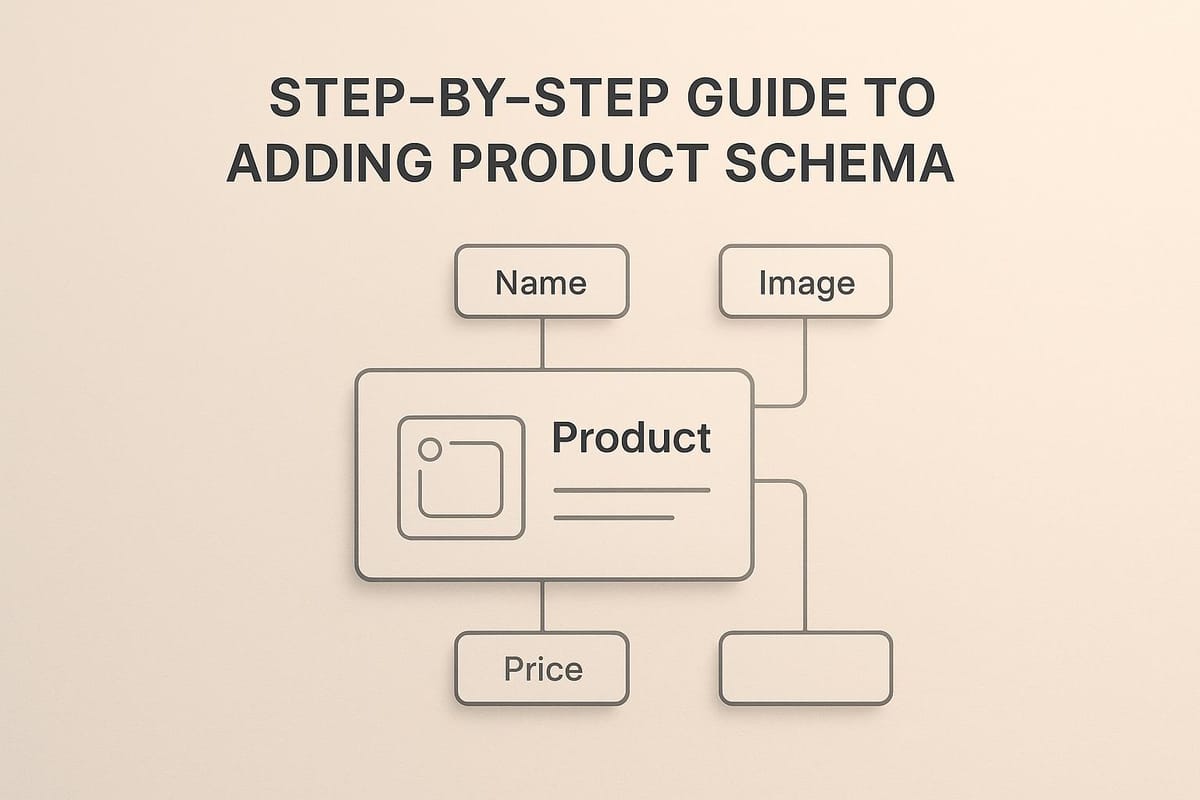Look, I get it. You're here because you Googled "H1 vs H2" and now you're wondering if these mysterious tags are the reason your website is ranking somewhere between page 47 and the dark web.
Spoiler alert: They're probably not. But hey, you're already here, and I've already spent way too much time obsessing over heading tags to let this knowledge go to waste. So buckle up, buttercup – we're about to dive into the thrilling world of HTML hierarchy.
Remember when SEO was simple? Yeah, me neither. But somewhere between keyword stuffing being acceptable and Google developing sentience, we decided that the difference between an H1 and H2 tag could make or break your entire digital existence.
What a time to be alive.
What Are Header Tags and Why Do They Matter? (Spoiler: Less Than You Think, More Than You Hope)
Picture this: It's 1993. Tim Berners-Lee is sitting in his office, thinking, "You know what the internet needs? A way to make some text bigger than other text." And thus, heading tags were born. Revolutionary stuff.
Fast forward to 2025, and we've somehow convinced ourselves that these simple formatting tools hold the key to SEO success. It's like believing your car will run faster if you organize the glove compartment properly. Sure, it helps, but let's not get carried away.
Header tags are essentially HTML's way of saying, "Hey, this bit is more important than that bit." They range from H1 (the big boss) to H6 (the intern nobody remembers hiring). Think of them as the corporate hierarchy of your webpage – everyone knows who's in charge, but nobody's quite sure what H5 and H6 actually do.
Here's what these tags actually accomplish in the real world:
- They make your content scannable (because apparently, reading full paragraphs is so 2019)
- They help search engines understand your content structure (as if Google needs our help)
- They make your website accessible to screen readers (actually important, but nobody talks about this)
- They give SEO consultants something to audit and charge you for
The brutal truth? Header tags are like wearing a suit to a job interview. Does it guarantee you'll get the job? No. Will you look unprofessional without one? Probably. It's basic hygiene for your website – necessary but not sufficient.
I once had a client who spent three months perfecting their heading structure. Their traffic stayed exactly the same, but boy, did those headings look organized. That's when I realized we might be overthinking this whole thing.
H1 vs H2: Understanding When and How to Use Each Tag (Or: The Hierarchy Nobody Respects)
Remember in school when they taught you there could only be one main idea per essay? Well, the H1 tag is basically that annoying English teacher, insisting there can only be one of them per page.
The H1 is your page's elevator pitch – if your elevator pitch was limited to about 60 characters and had to include keywords. It's like trying to explain your entire personality in a Twitter bio. Good luck with that.
I've seen people treat their H1 like it's the One Ring from Lord of the Rings – "One H1 to rule them all." And honestly? They're not wrong. Having multiple H1s is like showing up to a meeting with two CEOs. Confusing, unnecessary, and someone's definitely getting fired.
Your H2 tags, on the other hand, are the middle management of your content. You can have as many as you want, which is great because SEO people love to create artificial scarcity. "Only one H1!" they cry, while gleefully sprinkling H2s around like confetti at a keyword-optimized wedding.
Here's how this plays out in reality:
- H1: "How to Make Perfect Pasta" (boring but effective)
- H2: "Choosing Your Pasta" (because apparently this needs its own section)
- H2: "Boiling Water Like a Pro" (I wish I was joking)
- H2: "The Ancient Art of Salting" (SEO has gone too far)
The relationship between H1 and H2 is like a dysfunctional family dinner. The H1 (dad) makes grand pronouncements about what the page is about. The H2s (the kids) then spend the rest of the page explaining what dad actually meant, while occasionally going off on tangents about their own interests.
In my experience, the biggest mistake people make is overthinking this relationship. I once spent two hours in a meeting debating whether "Ultimate Guide" or "Complete Guide" in the H1 would perform better. Spoiler: It didn't matter. The content was still mediocre, just with a slightly different hat.
How Header Tags Boost Your SEO Performance (And Other Fairy Tales We Tell Ourselves)
Let me tell you a secret that SEO agencies don't want you to know: Header tags alone have never made anyone rich. Shocking, I know. It's like expecting to become a master chef because you bought expensive knives.
But here's where it gets interesting (and by interesting, I mean mildly less boring). Google's crawlers read your headers like a very judgmental speed reader. They skim through, looking for clues about what your page is about, probably while rolling their algorithmic eyes at your keyword stuffing attempts.
The real magic happens when headers align with what Google calls "search intent" – which is basically Google's way of saying, "We're going to guess what people want and penalize you if you guess wrong." Fun game, right?
Headers impact your SEO in several ways that range from "actually important" to "SEO consultants need to justify their existence":
- They help Google understand your content structure (legitimate)
- They can get you featured snippets (the SEO lottery)
- They improve user experience metrics (because confused visitors bounce faster than a rubber ball)
- They make your content more shareable (said no one ever, but we keep saying it)
- They give you more places to naturally include keywords (naturally, wink wink)
I once worked with a site that had perfect heading structure. Every H1 was optimized, every H2 was crafted with care. Their content? Absolute garbage. But those headings? Chef's kiss. They ranked on page 3, which in SEO terms is like getting a participation trophy.
The truth is, headers are like the seasoning on your content meal. Important? Yes. But if your main dish is a shoe, no amount of seasoning is going to make it taste good. Yet here we are, debating whether to use oregano or basil while serving footwear.
How to Implement H1 and H2 Tags Effectively (Without Losing Your Mind or Your Rankings)
Alright, let's get practical. Because apparently, making text bigger requires a strategy now. Welcome to 2025, where we need guidelines for everything, including how to breathe while optimizing meta descriptions.
Writing effective H1 tags is like writing a dating profile – you want to be attractive, honest, and include just enough keywords to be found without looking desperate. "Single Page Looking for Long-Term Rankings, Enjoys Long Crawls on the Beach." See? Terrible.
Your H1 should be clear, compelling, and contain your primary keyword without sounding like a robot had a stroke. Here's a revolutionary idea: Write it for humans first. I know, I know, blasphemy in SEO circles.
For H2 tags, think of them as chapter titles in the world's most boring book – your website. Each one should make sense on its own while supporting the main topic. It's like building with Legos, except each block needs to be keyword-optimized and user-friendly. No pressure.
Here's my tried-and-tested process that definitely always works (results may vary):
- Write your content first (radical, I know)
- Identify natural breaking points (where readers' eyes glaze over)
- Create H2s that summarize each section (bonus points for including keywords)
- Add H3s if you really hate your readers and want to break things down further
- Check that your H1 actually describes what you wrote (you'd be surprised how often it doesn't)
Technical implementation is where things get spicy. And by spicy, I mean tediously straightforward. You literally just wrap your text in tags. <h1>Your Title Here</h1>. That's it. That's the whole thing. Yet somehow, we've built an entire industry around this.
The number of times I've seen developers mess this up is astounding. Like that time a client had all their headers as images because "it looked prettier." Sure, it looked great. Google had no idea what the page was about, but those images were stunning.
Heading Tag Mistakes That Hurt Your SEO (A.K.A. "How to Sabotage Yourself in 5 Easy Steps")
You know what's fun? Watching people find creative ways to mess up something as simple as heading tags. It's like watching someone burn water – you didn't think it was possible, but here we are.
The multiple H1 syndrome is my personal favorite. It's like someone heard "H1 is important" and thought, "You know what? Let's have seven of them!" That's not how importance works, Kevin. You can't make everything the most important thing. That's called having no priorities.
Then there's the missing H1 altogether. This is like showing up to your own wedding and forgetting to say your name. Your page is just standing there, awkwardly existing without introducing itself. Google's confused, users are confused, and somewhere, an SEO consultant just felt a disturbance in the force.
But wait, it gets better. Let me share the greatest hits of heading tag disasters:
- The keyword stuffer: "H1: Best Plumber Chicago Plumbing Services Chicago Plumber"
- The creative writer: "H2: A Journey Into the Mysterious World of Pipe Fitting" (It's plumbing, not Lord of the Rings)
- The skip-level enthusiast: H1 straight to H3, because H2 is apparently optional now
- The stylist: Using headers purely for formatting, like making your company address an H3 because you like how it looks
- The empty header:
<h2></h2>(Yes, this happens. No, I don't know why.)
My absolute favorite was a client who used H1 tags for their footer links because "they wanted them to rank better." That's not how any of this works. That's like wearing a tuxedo to the gym because you want to look successful while sweating.
The over-optimization crowd deserves special mention. These are the folks who've read one too many SEO blogs and decided every header needs to be a keyword sandwich. "H2: How Our Chicago Plumbing Services in Chicago Can Help Chicago Residents." Buddy, we get it. You're in Chicago.
Real-World Examples of Effective H1 and H2 Usage (Or: "Look, Some People Actually Get It Right")
After all this cynicism, you might be wondering if anyone actually does this right. Surprisingly, yes. It's like finding a unicorn, but less magical and more "Oh, they just used common sense."
Let's start with e-commerce, where heading tags go to die. Most product pages look like they were optimized by someone who just discovered both keywords and caps lock. But occasionally, you find a gem.
Good example: "Men's Waterproof Hiking Boots" (H1). Simple, clear, includes what people actually search for. The H2s then break down features, sizing, care instructions – you know, useful stuff.
Bad example: "ULTIMATE MEGA SALE BEST BOOTS HIKING WATERPROOF MENS SHOES OUTDOOR GEAR SALE" (Yes, this was real. Yes, it hurt my soul.)
Blog posts are where people really let their creativity run wild, and by creativity, I mean "complete abandonment of logic":
- Good: H1 clearly states the topic, H2s break down key points, readers can scan and understand
- Bad: H1 is a clickbait question, H2s are more questions, entire post is questions, no answers anywhere
Service pages are particularly entertaining. I've seen law firms with H1s like "Excellence in Legal Services Since 1847." Cool story, bro. But what do you actually do? Meanwhile, their competitor has "Chicago Personal Injury Lawyer" and is eating their lunch in search results.
Local businesses deserve their own category of face-palm. "H1: Welcome to Our Website!" No. Just no. That's like naming your dog "Dog." Technically correct, maximally useless.
The best examples I've seen understand a simple truth: Headers are for humans first, search engines second. They use natural language, clear structure, and don't try to game the system. Revolutionary concept, I know.
Take this structure from a successful recipe site:
- H1: "Easy Chicken Marsala Recipe (30 Minutes)"
- H2: "Ingredients You'll Need"
- H2: "Step-by-Step Instructions"
- H2: "Chef's Tips for Perfect Marsala"
- H2: "Common Mistakes to Avoid"
See? Clear, logical, helpful. No keyword acrobatics, no SEO gymnastics. Just... headers doing what headers were meant to do.
The Uncomfortable Truth About Heading Tags
Here's the thing about H1 vs H2 tags that nobody wants to admit: They matter exactly as much as you think they don't, and less than SEO gurus claim they do.
After years of obsessing over heading hierarchies, running tests, and watching rankings fluctuate for reasons that have nothing to do with whether I used "Ultimate" or "Complete" in my H1, I've reached a stunning conclusion: Good content with bad headers beats bad content with perfect headers every single time.
But here's the kicker – you still need to get them right. Not because they're magical ranking factors that will catapult you to position one, but because they're part of doing the job properly. It's like brushing your teeth. Nobody's going to date you just because you brush your teeth, but good luck getting a date without doing it.
Use one H1 per page. Make it descriptive. Use H2s to break up your content into logical sections. Include keywords naturally. Make it scannable. Help both humans and robots understand what you're trying to say. It's not rocket science, even though we've somehow made it feel that way.
The real tragedy is that while we're all arguing about heading tags, someone else is creating actually helpful content with mediocre headers and winning. Because at the end of the day, Google's pretty smart. It can figure out what your page is about even if your heading structure looks like it was designed by a caffeinated squirrel.
So yes, optimize your headers. But maybe, just maybe, spend more time making your content worth reading. Because the best heading structure in the world won't save boring, useless content.
And if you're still worried about whether your H2 should be "Tips for Success" or "Successful Tips," you're asking the wrong questions. The right question is: "Is this content actually helping anyone?"
Now if you'll excuse me, I need to go optimize some headers. Not because they'll change everything, but because it's Tuesday, and what else am I going to do? Actually create valuable content?
Please. I have keywords to strategically place.




Comments